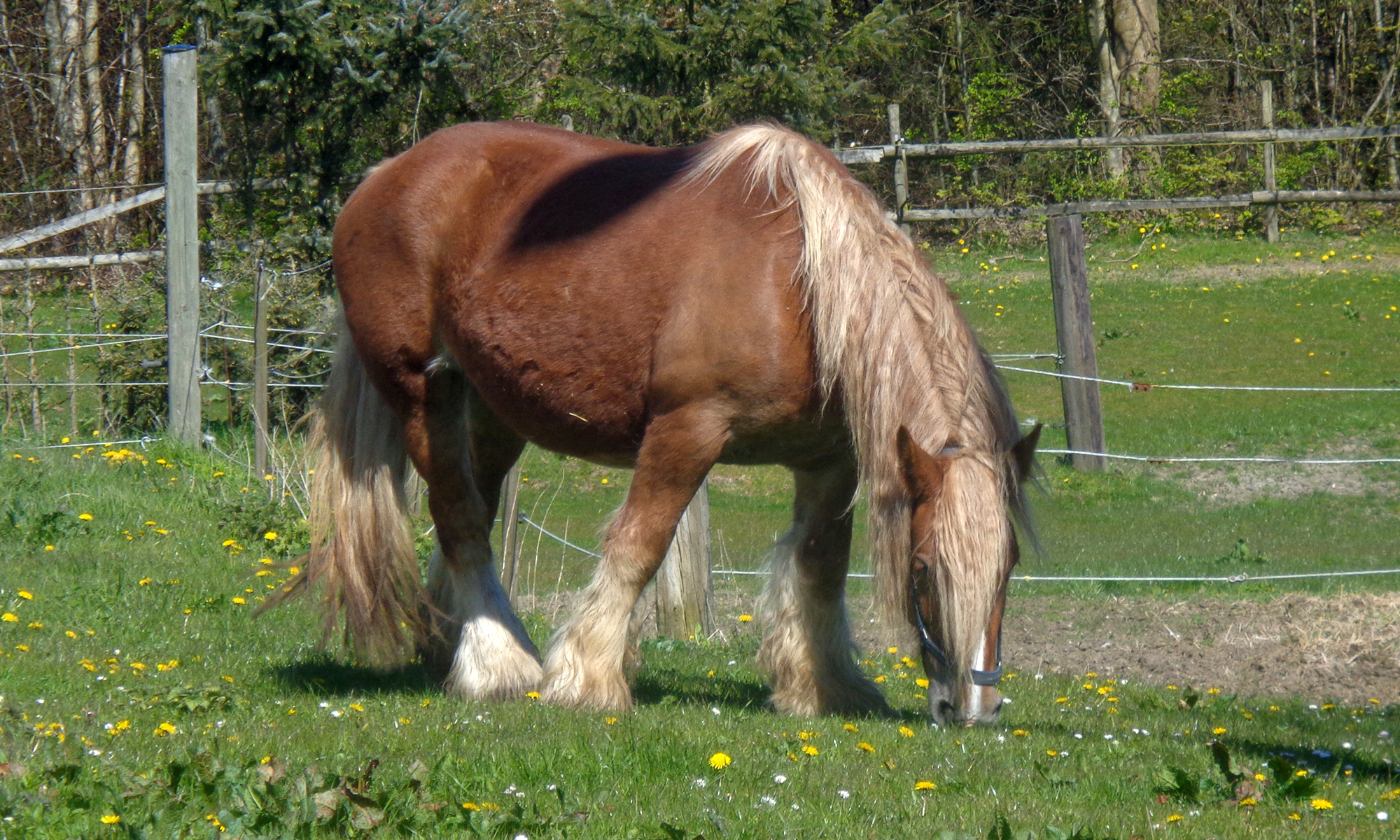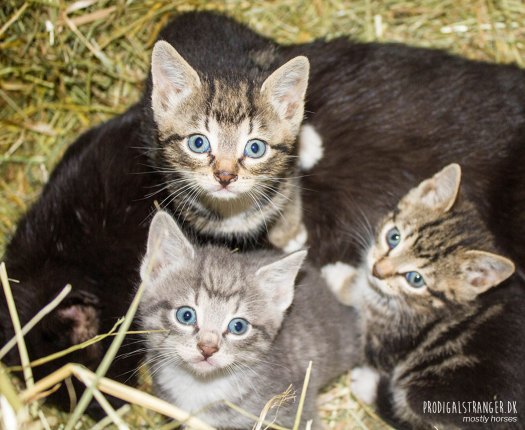The year that keeps on giving. But in between the pandemic and my own illness, I did manage to occasionally whip that camera out, and not everything turned out hopeless.










Something, nothing, everything. Mostly horses.
The year that keeps on giving. But in between the pandemic and my own illness, I did manage to occasionally whip that camera out, and not everything turned out hopeless.









Few things put me in a better mood than watching little girls play with very big horses. Tiny human beings learning the power of asking gentle giants nicely instead of demanding and scolding. Watching reservations on both sides melt away and turn into mutual trust.
Any equine can do training with poles, obstacles, and new sensations. There’s no magic secret, just communicating. Exposing horses to new things help them learn to trust that we really do know best—so that when something unexpected happens, their response is to ask us what to do instead of bolting or panicking. This is a game humans and horses play together, where humans come up with challenges and obstacles, and horses show humans that pshaw, that’s nothing.
Training last Sunday turned out to be day of the cold-bloods. I present to you, in no particular order, haflinger Nando, Jutland draft Emilie, and fjord pony, Loke—the cold-blood allstars.









Emilie has always had a thing for little girls. Remember this one from a few years back?
Foxi doesn’t like being yelled at.
Foxi is a mixed race pony (Icelandic horse and Welsh Mountain, we think, but no one knows for sure). She’s sensitive, intelligent, and bossy. My big Jutland draft, weighing in at 800 kilos, doesn’t want to argue with Foxi. Foxi takes charge. She’s a small but very determined little lady.
At times, Foxi freaks out. While cool-headed and kind, she can flip a switch and go ballistic at two seconds’ notice. Her owners respect Foxi’s needs, keep things nice and quiet, and don’t pressure her for no reason. Foxi is fond of her humans and trusts her teenage rider. Foxi used to have a bad reputation for trying to throw her rider for no apparent reason, but it hardly ever happens anymore.
I’ve known her for three months, and I’m pretty sure I’ve figured out what Foxi’s issue is. She was bred for trail riding with tourists, at a farm where teenage girls handled the horses largely unsupervised by adults. Teenagers aren’t incompetent and most of them handle horses just fine, but they do need adults to be there, keep a clear head, and help them out when things go pear-shaped. Teenagers can be hard working and have all the good intentions, but very few have a decade or more of horsemanship experience to draw on (for obvious reasons). Foxi was judged to be too volatile and was sold off—to a pony riding club, where her story repeated, until her current owners adopted her.
The other day, Foxi was a bit upset that she was left last in the paddock at turn-in. She galloped up to me and asked to be let in—and I obliged. I don’t usually walk with the livelier horses and ponies because of my handicap, but she really wanted to go in, and she asked very nicely. So we walked. Foxi set a quick pace to catch up to the others, and I pulled lightly on her halter to slow her down.
Foxi froze, then started dancing nervously.
I told her to relax, just slow down a little, we got this.
Foxi breathed out hard, relaxed, and walked at my pace the rest of the way.
In other words, Foxi was an inch from flipping her lid but decided not to. Foxi isn’t misbehaved or badly trained. Foxi is afraid of being yelled at. She needed me to reassure her that yeah, sure, you walked a little too fast but it’s cool, we’ll just slow down and everything will be fine, don’t worry about it. What she expected was for me to yell at her, maybe even hit her, and when I just told her everything is fine, everything really was fine.
I can’t help but wonder how many times, before she was sold to her current owners, Foxi has asked a human for reassurance only to get yelled at, or hit with a riding crop.
A lot of equine anxiety bounds in humans teaching our horses to be afraid to ask for reassurance from us. We must teach new riders, young or old, to pay attention to the language of horses. To think of their horse as a partner, rather than a piece of sporting equipment. If your co-worker asks you a question, you answer it. You don’t yell at them or, heaven forbid, pick up a riding crop to make them ‘submit’. This does not change just because your equine co-worker has double the amount of legs.
I walked with Foxi to the paddock this morning. She slowed down on her own and waited for me.
I have never met a horse who didn’t talk. Horses don’t always feel a particular need to communicate at a given moment, but they’re never silent. They always respond, even if it’s just to say, ‘leave me alone, please.’
Every flick of an ear, every sideways glance, every deep breath or turning of the head—it’s all communication. Most of us already know their language. We brush pony down and tell our barn buddy that pony seems extra chipper today. How do we know? She greeted us with ears high and eyes open but relaxed, presenting her nostrils to exchange scents, and investigating our pockets. Pony is in a good mood—energetic but not stressed out, and wants to do something that earns treats. She wants to work, and earn the reward for working.

Or maybe pony seems sad. Eyes are half shut, jaw is tight, ears are in the stiff, half-back position that signifies discomfort or even pain. Pony mostly just stands there, drawn into himself, disinterested. We don’t need to be experts on equine anatomy to tell that pony isn’t happy—we just need to know him. He’s not usually like that. We probably should keep an eye on him.

Horses are in constant communication with each other, but not necessarily with us. A horse doesn’t try hard to talk to us if he’s never experienced us actually listening or responding—and definitely not if we responded with telling him off for unwanted behaviour. Those who are accustomed to being heard talk to us, a lot. Even if they probably think we’re a little slow on the uptake. They are master listeners; they pay attention to excruciating detail. In comparison, humans don’t see half of what’s going on around us.
Horses want to communicate with us. From the foal curiously investigating our hands and trying to figure out what we’re for, to the senior horse politely asking for a back rub of sore old muscles. They don’t think like humans (duh!), they think like horses. Horses talk about horse things. Ask us about horse things. And when we listen, we train each other to get better at talking.

Every horse I have owned I have had to start with polite hellos, getting to know one another. Six months later, I’m having conversations—chats that feel as real to me as any chat I’d have with a human. The neighbour talks about his lawn and the hedge that needs trimmed; my writer friend talks about pages written and grammar rules; my horse talks about the weather, what she’d like to do today, and would I care for a mutual grooming session. We all talk about the things that matter to us.

I think the most challenging part of talking with, rather than to, horses is learning to ask questions and let horses make the decisions. They’re really good at it; the herd survives because each horse constantly evaluates who is best at solving whatever problem we’re dealing with, and then following the lead of the horse who knows best. A horse won’t think less of you because you defer to his judgement. He won’t think less of you because you make him defer to yours. The horse or person most suited to solve a problem makes the call.

I ask Emilie all the time to make decisions. I sit down on my chair, in the position for massaging her chest (which she loves) and ask her, do you want a grooming session? Sometimes she marches right up and starts grooming my back in return (which she is absolutely great at!). At other times she glances at me, turns her head away politely, and grabs some straw. Thank you, but not today. Do you want this brush? Yes, please. Do you want your butt washed today? Yes, please, it’s sweaty and itchy. Do you want me to comb your leg feathers? Naw, they’re good, and I’m feeling ticklish today.
Because of my physical handicap, I have been training Emilie from day one to be able to take the lead. In our relationship, we take turns being in charge. When we do the things I think are necessary—whether it’s waiting at the box door or (shudder!) the farrier, I’m in charge. I tell her what to do. When we’re in the paddock or the field, or anywhere else at liberty, she’s in charge. As a result, I have a horse whom a toddler can lead; but who can also take charge of a situation and boss humans around if necessary.

Emilie brings me her ball for kicking. She takes me for a grazing walk where I support my weight against her shoulder and she matches her pace to mine so I don’t stumble. Evil chickens come too close? Emilie steps in front and protects me from perceived danger. I can’t currently ride her due to my own pain, but when we do—if something scary happens, she will evaluate the situation. If it’s too scary or stressful for Emilie to feel confident, she will walk up to my husband and command him to take charge, regardless of what I say.
That’s intentional. I have fainting spells. Emilie knows that if for some reason I become non-responsive on her back, appear distracted or give half-assed signals—walk up to the nearest adult and ask for assistance. Yeah. Horses are that smart. Mares know to protect foals. The herd looks after its own.
That’s the crux of it, really. Don’t be master and servant. Be partners. Meet on equal terms. Talk, and listen.
